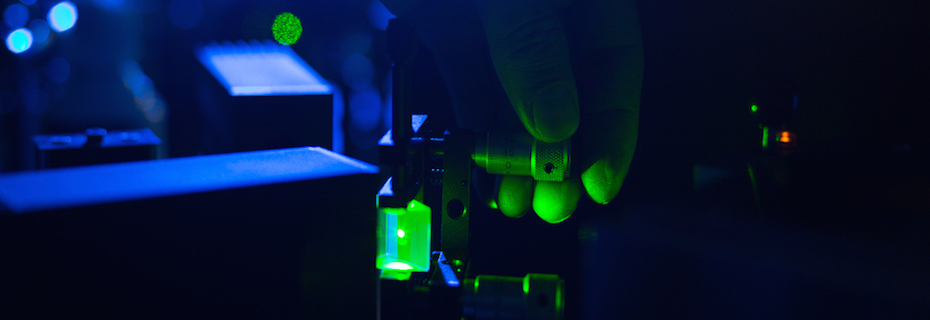News from FZU
A rare visit from the French Embassy
Categories: News from FZU
Quantum Tops at the LHC
Abstract: Discover the cutting-edge intersection of quantum information and particle physics: learn how the recent detection of quantum entanglement in top quark pairs by ATLAS and CMS is opening new frontiers at the LHC.Recently, the ATLAS and CMS Collaborations made the first observation of quantum entanglement in top quark pairs, marking an exciting milestone at the LHC. At first glance, this might seem unsurprising - after all, the Standard Model is a quantum field theory. So why is this discovery generating so much buzz? In this seminar, I will unpack the technical challenges behind this measurement and illustrate how quantum information concepts can provide new tools for high-energy physics, and vice versa. I will also discuss the unexpected observation of toponium formation at the LHC, placing it in the broader phenomenological context: what makes modeling top quark pair production and decay so challenging? Finally, I will explore the prospects for the upcoming Run 3 dataset and the High-Luminosity LHC era, highlighting how quantum information techniques may open entirely new avenues in precision measurements and the emerging subfield of quantum information at the LHC.
Categories: News from FZU
From research to business: inspiration, experience, and new programs for scientific start-ups
How science is transformed into a company, and what does it take to make a successful spin-off? These questions were addressed at the conference Od výzkumu k firmě: zakládání vědeckých start-upů a spin-offů (From Research to Business: Founding Scientific Start-ups and Spin-offs), organized by the Division of Optics’ team. The event offered an inspiring atmosphere and a diverse mix of participants – scientists, representatives of stat-up support providers, and start-up founders.
Categories: News from FZU
Filip Křížek: I enrolled in the Faculty of Nuclear Science to get a cheaper tram pass
Categories: News from FZU
In Memory of Prof. Ing. Jindřich Musil, DrSc., Emeritus Scientist at the Department of Analysis of Functional Materials
Jindřich Musil was born on January 19, 1934, in Březina. After graduating from the University of Defense in Brno in 1957, he started to pursue his career in science; first as a researcher at Tesla, then, from 1961, at the Czechoslovak Academy of Sciences at the Institute of Plasma Physics and the Institute of Physics.
Categories: News from FZU
Lukáš Palatinus: One of the greatest challenges in materials science is determining the position of atoms in non-crystalline substances
Categories: News from FZU
Open Seminar of Department 18 and FerrMion Project
The seminar will be held on the occasion of the visit of colleagues from the Institute of Metallurgy and Material Science, Polish Academy of Sciences; Institute of High Pressure Physics, Polish Academy of Sciences; Warsaw University of Technology; and Institute of Materials and Machine Mechanics, Slovak Academy of Sciences. The invited speakers are experts on powder metallurgy, processing, corrosion and microstructural characterization of metallic materials with the focus, but not only on biodegradable metallic materials. In their presentations, our guests will introduce their institutes, current research activities, their main results and inventions and also possibilities of mutual collaboration.
Categories: News from FZU
RNDr. Jan Loos, CSc. has passed away
Jan Loos, an emeritus member of the Department of Magnetics and Superconductors at the Cukrovarnická site, passed away on 9 November 2025 at the age of 95.
Categories: News from FZU
Tomáš Jungwirth among the world's most cited scientists for the fourth time
Categories: News from FZU
FAIR Wizard Workshop: Mastering DMP
Master your data with this hands-on workshop on FAIR Wizard — an online tool for creating and managing Data Management Plans. In just 90 minutes, you’ll learn how to streamline your workflow, enhance data quality, and easily apply FAIR principles in your research.
Categories: News from FZU
Solar Sail Propulsion For Exploring the Solar System
Dear colleagues,we would like to invite you to the seminar of Division of Elementary Particle Physics of Institute of Physics, presented by Les Johnson, the former Chief Technology Officer, NASA Marshall Space Flight Center (MSFC), Huntsville, Alabama.For more info, please see invitation.
Categories: News from FZU
Patrik Čechvala: Cosmos teaches us patience
Unlike in working with particle accelerators, where scientists plan their experiments in detail in advance, Patrik Čechvala has to wait and see what particles arrive from the depths of space. He is dedicated to observing particle showers caused by photons with extraordinary energies. In an interview about the MSCA COFUND Physics for Future postdoctoral program at the Institute of Physics of the Czech Academy of Sciences, he talks about why space is the best laboratory and how cosmic rays help uncover the secrets of the pyramids – as well as how to present the topic to the public in contests such as FameLab, in whose Czech finals he represented the Institute of Physics this year.
Categories: News from FZU
Research Data Trainings at FZU: DMP & GitHub
Boost your research with hands-on sessions designed to help you manage, share, and protect your data more effectively. In just a few hours, you’ll gain useful tools and insights for modern research practice.A light lunch will be provided for participants between the morning and afternoon sessions
Categories: News from FZU
Research Data Trainings at FZU: FAIR Data & Licences
Boost your research with hands-on sessions designed to help you manage, share, and protect your data more effectively. In just a few hours, you’ll gain useful tools and insights for modern research practice.A light lunch will be provided for participants between the morning and afternoon sessions.
Categories: News from FZU
First joint conference of FZU and IOCB
Categories: News from FZU



